
Arquivo para July, 2022
Covid 19: increase and new variant
We have only posted the number of infections that experience a significant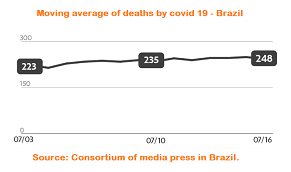 increase, but a recent report by CNN warns that the number of deaths has increased by 67% in the last month and the data is worrying, the new variant BA.5 seems to be linked to the fact.
increase, but a recent report by CNN warns that the number of deaths has increased by 67% in the last month and the data is worrying, the new variant BA.5 seems to be linked to the fact.
According to CNN itself, Japan experiences a record of more than 110,000 cases, which made Prime Minister Fumio Kishida say on Thursday (14/07) that the wave is spreading quickly and asked for special care on holidays and weekends.
In Brazil it is no different, we posted the number of deaths (see the graph above) just to alert the seriousness, since the current wave has not represented a great concern in the eyes of the authorities, although experts are already starting an alert because of the new variant.
Experts detected the BA.4 and BA.5 variants in South Africa and then started monitoring it in the UK, the US and now it spreads across Europe.
The most worrying thing is that it even affects people who have had Covid recently,
These subvariants that emerged from the “original” omicron were added to the World Health Organization (WHO) watch list in March of this year and also ended up designated as variants of concern in Europe.
The important thing is to point out that as the virus spreads (that is, it continues to circulate) it allows new mutations, so even immune and asymptomatic people should have the same care as others.
An awareness campaign is needed, and there are few campaigns in this direction.
Referência do site twinkl a nosso post
The site Twinkl is make a reference to our post about friendship in philosophy, in text about the day 30/07, International Day of Frienship , thanks for this reference.
The being, the clearing and the necessary
Only through language do we possess an habitation of being, being in it we can have access to the clearing, and unfolding in this being-there we take care of our ex-sistence, and thus the clearing is the world and is in the world, in this truth Heidegger believed and it was through her that he wrote Letters to Humanism, which received the answer from Sloterdijk who states that the clearing would not be the habitat, much less what we today call environment or “house”, because we are in rupture with nature. , while Heidegger considers the human being to be the shepherd of being, Sloterdijk states that his task is to know how to guard the Being, both were not religious, Heidegger was religious for a period, but he abandoned it.
have access to the clearing, and unfolding in this being-there we take care of our ex-sistence, and thus the clearing is the world and is in the world, in this truth Heidegger believed and it was through her that he wrote Letters to Humanism, which received the answer from Sloterdijk who states that the clearing would not be the habitat, much less what we today call environment or “house”, because we are in rupture with nature. , while Heidegger considers the human being to be the shepherd of being, Sloterdijk states that his task is to know how to guard the Being, both were not religious, Heidegger was religious for a period, but he abandoned it.
Long before the pandemic, Sloterdijk created the term co-immunity, alluding to the task of caring for the “sick” being here in a broad sense that includes the social, and such a task is used in the being, choosing it freely and impregnating itself. her or not, so it does not depend on the language he is used to, while the man lives a life of exercises, almost always empty, or with the term he used making an asceticism (ascension through exercises) despiritualized, that is, without taking care of himself as sick, but adhering to the disease.
So we live a life focused on action, performance, a set of exercises to explore ourselves, too bad Byung Chul Han focuses excessively on social media, they are also means as languages, but consumerism, activism and the search of an active being he finds only a false asceticism, even if religious, shallow because it does not take care of the sick.
For both Heidegger and Sloterdijk, it is not about the soul, nor about the divine elevation of man, it is only the civilizing process, but for Christians who understand how deep and important a true personal asceticism is, it is about the soul. and of eternal life.
The biblical passage that most reflects this is the one that reminds us of what is essential, I would even say that only one thing is necessary, to hear the voice from above, of full life and the true light of the clearing, Luke 10, 38-42, in which Jesus visits the house of Martha, “a certain woman” and Mary his sister, the reading says so they are not known women, as some exegetes say.
Martha is busy with chores, she certainly prepares something for the master, and Martha sits at his feet to listen to the master, and Martha gets mad at her sister who doesn’t help her.
But the master even rebukes her and says (Lk 10:41-42): “Martha, Martha! You worry and are agitated by many things. However, only one thing is necessary. Mary has chosen the better part and it will not be taken away from her.”
Only one thing is necessary, and that is not alienation but the clearing from which we are moving away.
Pre-occupation and mystery
As we developed the themes of last week, the clearing is the abode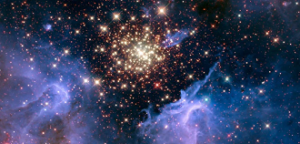 of the Being, in general and within certain contexts: “what is hidden within the whole, and from where the Being must emerge” that we elaborated there, this is what enchants the first images of the James Webb observatory, within the context of the universe, to look at great mysteries and phenomena there.
of the Being, in general and within certain contexts: “what is hidden within the whole, and from where the Being must emerge” that we elaborated there, this is what enchants the first images of the James Webb observatory, within the context of the universe, to look at great mysteries and phenomena there.
Leaving the occupation and entering the mystery is thus an expansion of the Being, when we discovered a new world at the end of the Middle Ages, a set of discoveries around science were also being illuminated and they too were the beginning of a clearing, but the close link to subjectivism, the path of a materialist objectivism had once again been hidden.
Pre-occupation, meaning what occupies our mind and, consequently, our act, develops in the whirlwind of modernity in a “society of Burnout”, where pre-occupation leads at the same time to mental and social exhaustion, and a lack of contemplation, that is, our inability to “admire and think about something” in a contemplative state.
Thus, it is only possible to leave pre-occupation through a process of clearing the Being, a plunge into the mystery, an ability to “put in parentheses” our thoughts and actions (the method of the phenomenological epoché), and thus return to “breathing” and leaving the toxicity of the modern world, we do not fail to analyze and observe the serious facts of contemporaneity.
Thus, the concealment, the mystification or false “mystification” of reality is opposite to the clearing, and very different from the occultism, the example of James Webb’s images and studies are a clear vision of this plunge into the mystery, where we can always find novelties and new enigmas. .
Pre-occupation is the sameness of the contemporary world, false problems and real problems hidden in discourses and addicted ways of seeing reality, like someone with vision difficulties and not subject to the use of glasses to clarify reality.
Contemplating is a complementary act with active life, and only it allows a unity of Being, where even in dark moments there is light and serenity.
James Webb’s First 5 Images
The first color images of James Webb have arrived, they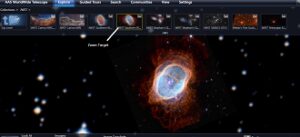 are really amazing and also the tools available to users, in addition to all the internal resources of course.
are really amazing and also the tools available to users, in addition to all the internal resources of course.
A historic target was Stephan’s Quintet, the first compact group of galaxies that was discovered in 1787, it is in the constellation of Pegasus, as the name implies, there are five galaxies, four of which dance between them and two are very close.
Birth in the so-called Southern Ring, an immense cloud of gas surrounding a dying star resulted from eight explosions from an ancient sun now reduced to a white dwarf.
An authentic “nursery” of a star, the white dots inside an enormous “mystical mountain” made by elements that “feed” the formation of a star, the so-called Carina nebula.
The other equally spectacular images were the first giant exoplanet, about half the size of Jupiter, of WASP-96 b, discovered in 2014 and which was shown using internal resources the spectrum of elements present on it, that is, if it has water and other chemical elements that make it up.
And finally a fifth image was shown of the cluster of galaxies, SMACS 0723, which works as if it were a cosmic magnifying glass to see and see what other galaxies are like and this is just the first.
Using an available zoom tool allows you to choose your target (in options above, for 5 images: JWST) and take the tour by traveling millions of light years and having an experience close to scientists.
Star Wars and James Webb’s First Images
Russia is developing an orbital station capable of destroying satellites in orbit, it is a clear reference to Elon Musk’s StarLink send internet signals and other satellites that scour wartime images.
satellites in orbit, it is a clear reference to Elon Musk’s StarLink send internet signals and other satellites that scour wartime images.
In November last year Russia successfully tested the destruction of its own inoperative spacecraft “Tselina-D” which had been in orbit since 1982, the missile was launched from the ground.
According to General David Thompson, deputy head of operations for the US Space Force, in a statement to the Washington Post, US satellites suffer attacks from China and Russia “every day”, so the war already extrapolates the planet, while ground wars are prolonged.
On the other hand, today is the day of the first photos observed by the James Webb telescope, at 11 am in Brazil, one of them will be the Carina nebula (photo taken by Hubble above), located 7,600 light-years away, where the objective is to understand the birth of the suns, which in this nebula are immense and in quantity.
On one side the birth and on the other the death of stars, another James Webb image will be of the Southern Ring nebula, an immense cloud of gas that surrounds a dying star and is about 2,000 light years from Earth.
A third target is historical, it is the Stephan’s Quintet, the first compact group of galaxies that was discovered in 1787, a period still with limited telescopes and that is in the constellation of Pegasus.
Using a special spectroscopy technique, which allows you to see the chemical composition of a distant object, a giant planet called WASP-96 b, discovered in 2014 and which is 1,150 light-years from our planet.
The fifth target, not necessarily in this order, will be the use of a cluster of galaxies, SMACS 0713, which works as if it were a cosmic magnifying glass and allows us to see other galaxies behind, and which will be the most fantastic experience for astronomers.
On the one hand, imprisoned and at war on our tiny planet with threats of war, and on the other, a look at infinity that should make us open our minds and souls to a new future.
Covid on the rise and new variants
Covid 19 remains on the rise in the country under the carefree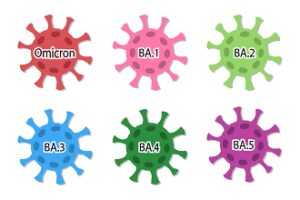 gaze of the authorities, environments where protocols are respected are rare, and the numbers of new variants have already appeared.
gaze of the authorities, environments where protocols are respected are rare, and the numbers of new variants have already appeared.
According to a study by Fiocruz, the new subvariants BA.4 and BA.5, which were around 8% in May, rose to a percentage of 25% in June, but the issue of lethality is not mentioned, but the transmissibility is as high as the variants previous.
The only quote I found in the medical field was from an immunologist at the Center for Biomedical Innovation at Pioneer Peking University in China, who claims that these variants are “certainly” more infectious compared to the previous ones, but more studies are needed.
The scenario is similar across North America and Europe and this indicates that the two new subvariants should become dominant in the country, also the vaccine efficacy is not clear.
What has helped in Brazil is a less severe winter, which does not worsen respiratory syndromes, but a new polar mass is expected for the middle of the month and the beginning of August.
Internationally, experts are concerned but emphasize that vaccines and boosters are not completely ineffective, Dan Barouch, an immunologist at Harvard Medical School, said in Boston: “Immunity from current vaccines must still provide robust protection. against serious illness, hospitalization and death”, is reassuring.
Even more encouraging news was published by National Geographic, which in addition to reporting that vaccine manufacturers are talking about a specific vaccine against Òmicron and according to Stephen Zeichner, an infectious disease specialist at the University of Virginia Medical Center: “It is very clear that the virus continues to evolve and in the future there is a need for a universal vaccine against covid 19 or even a universal vaccine against coronaviruses.”
Until we have this security, including against new variants, it is important to maintain care.
Conscience, truth and clearing
Consciousness can be classified in different ways, but i t is far from the whole to which the entity belongs (identified as material reality in modernity) it forgets being, thus what in fact is consciousness remains hidden and is closer to the sentience to which it is refer to artificial intelligence and what could be called machinic consciousness.
t is far from the whole to which the entity belongs (identified as material reality in modernity) it forgets being, thus what in fact is consciousness remains hidden and is closer to the sentience to which it is refer to artificial intelligence and what could be called machinic consciousness.
The clearing that emerges from being, already posted here, is the one that is contained in the context of a whole, and from it emerges the being, and this criticism can be extended to all modernity, where there is a fragmentation and everything refers to the part, often even opposed to the whole to which the entity belongs, and from it emerges the question of being, as Heidegger intended.
This whole is also claimed by Edgar Morin, who is 101 years old today, and together with Lima de Freitas and Barsarab Nicolescu, writing in Arrábida’s “Letter of Transdisciplinarity” (1994) as “the contemporary rupture between an increasingly accumulation and an increasingly impoverished inner being leads to the rise of a new obscurantism, whose consequences on the individual and social plane are incalculable” (Arrábida, 1994).
This type of formal consciousness also takes a notion not only of knowledge, but also of culture and even religion, to a deviation away from the clearing of Being and subject to formal rules and precepts, of Law and knowledge in an apparently rigorous but inhumane logic. and that hides the Being.
In culture, it means limiting the conception to a particular type of culture, of a single worldview, which is valid, but which cannot be imposed on other worldviews, especially the original ones.
For Christians, the biblical passage that clarifies this false consciousness is that Jesus is questioned by a master of the Law, specialists in formal consciousness, asks the master what he needs to do to conquer the divine kingdom, and Jesus says in modern language respect the Other and admits the Divine Being par excellence, the one who is the All in a monotheistic worldview (God).
However, the parable of the Good Samaritan is told immediately afterwards and makes the formal conscience clear, the parable says that a man was robbed and mistreated by robbing and he stood by the wayside, a priest and a Levite passed by (a tribe from which religious came from that time) and turned away from the problem, a Samaritan passed by (who was a people without religion and who did not like the Jews) and offered help, put oil and wine on the wounds, put it on his animal and took him to a pension paying his stay. and if it lasted longer, I would pay on the way back.
Only the Samaritan had an attitude of true conscience towards man, so Jesus told those who asked how to conquer the divine kingdom “Go and do likewise” (Mt 10:37).
Heidegger e a clareira « Blog Marcos L. Mucheroni Filosofia, Noosfera e cibercultura (marcosmucheroni.pro.br)
Sentience, Consciousness and Robots
If we watch or remember a science fiction movie like HAL-900,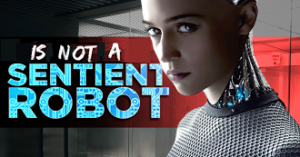 the supercomputer from the 2001 film A Space Odyssey, in which the computer starts making decisions by itself, or the parody of “The Simpsons”, in one episode a voice comes to intelligent life and falls in love with Merge and wants to kill Homer, today we are already able to identify the limits of these daydreams.
the supercomputer from the 2001 film A Space Odyssey, in which the computer starts making decisions by itself, or the parody of “The Simpsons”, in one episode a voice comes to intelligent life and falls in love with Merge and wants to kill Homer, today we are already able to identify the limits of these daydreams.
We are still not able to pinpoint the limits of the AI machine (the film in which an intelligent machine created to control the environment after the ice caps melt and encounter a human boy will David Swinton (artist Haley Joel Osmet) will have an unforgettable emotional experience with this machine, and Blade Runner, in my opinion the best fiction in this theme.
Blade Runner’s AI machine and sophisticated Androids are still far from being scientific realities that allow machines “awareness” or even “smart brains” (the LaMDA machine is just a program with data stored in a cloud), and they are works of art. science fiction, both aimed at a future beyond the second half of the 21st millennium.
Formal rules, however complex they are, are just sentient and even they are not AI, along the lines of the “sentient” in the film “ex-machina” the robot (in the above modified photo of the film) develops an “instinct”.
The problem of our civilization is to allow humanity to get there in social, environmental and moral security, so we must think of consciousness directed to these phenomena, since one can only speak of consciousness of “something” phenomenological, and the most urgent consciousness is the social peace.
Already at the limits of AI, which is moving towards advanced sentience, it is able to identify people by their facial features, cars by license plates and solve complex logical questions and advance to machine learning problems by identifying and classifying data in natural language that achieve learning. “from” deeper machine (deep learning).
To have a deeper awareness of reality beyond false advertisements, promises of earthly paradise that hide atrocities, look to social security, which includes all people in an accelerated pace of actions (the Fatigue Society) without pause for reflection.
Our most urgent and immediate problems are human: the empathic relationship and social peace.
Controversy of the conscious machine and some daydreams
Before any controversy, it is important to understand that 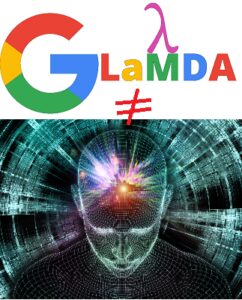 the issue of ethics is present in all serious AI (Artificial Intelligence) teams and since the conference in Sweden, several companies and research centers have signed an agreement not to develop lethal machines in AI.
the issue of ethics is present in all serious AI (Artificial Intelligence) teams and since the conference in Sweden, several companies and research centers have signed an agreement not to develop lethal machines in AI.
Jean-Gabriel Ganascia has written an important book on the Myth of the Singularity, the point at which the machine would surpass human intelligence and he himself has an ethics section in his lab, as many teams have, including Google.
A recent controversy arose from an interview with Google engineer Blake Lemoine to the Washington Post and having defined the search giant’s AI machine LaMDA as having sentience, Google immediately dismissed it and through its spokesman Brian Gabriel reported that the Blake’s concerns were not “in line with our AI principles and informed him that the evidence does not support his claims”, but the controversy continued.
The first thing to clarify is that sentience has a big difference from consciousness, which means that “perceiving through the senses [in the case of sensing machines [or having impressions, as consciousness there are several definitions, but we are left with that of phenomenology which states that only whether one can speak of consciousness of something, so it depends on the phenomenon and on the intention.
Also for phenomenology, especially for the ontology of Heidegger, his direct descendant (Heidegger was a student of Husserl), Being is described as the abode of language, but one cannot forget that language for Heidegger has a poetic function, that is, in a broader sense than everyday life.
Returning to the sense of sensors, we now have an evolution of the IoT (Internet of Things), one can think of facial expressions, gestures and attitudes that can identify the sentience of a machine, but the awareness of something also means for Heidegger, to reveal the hidden, that which leads us to a clearing of the object or phenomenon, the verification of its ex-sistence, its Being.
Without appealing to philosophy, returning to everyday life, it is possible for a human behavior that emits and develops like a machine, a robotization of our actions, which is also very common in modernity, a “sameness”, poetic language, art and culture comes to the rescue.
As for the technical aspect, it is desirable to know more in depth, while the social aspect cannot fail to observe important technical aspects and their limits, of course, including ethical ones.
For those who want technical details, I recommend Melanie Mitchell’s interview with Zeeshan Aleem: Did a Google create a sentient program ?, there’s a lot of fantasy and fiction out there.

